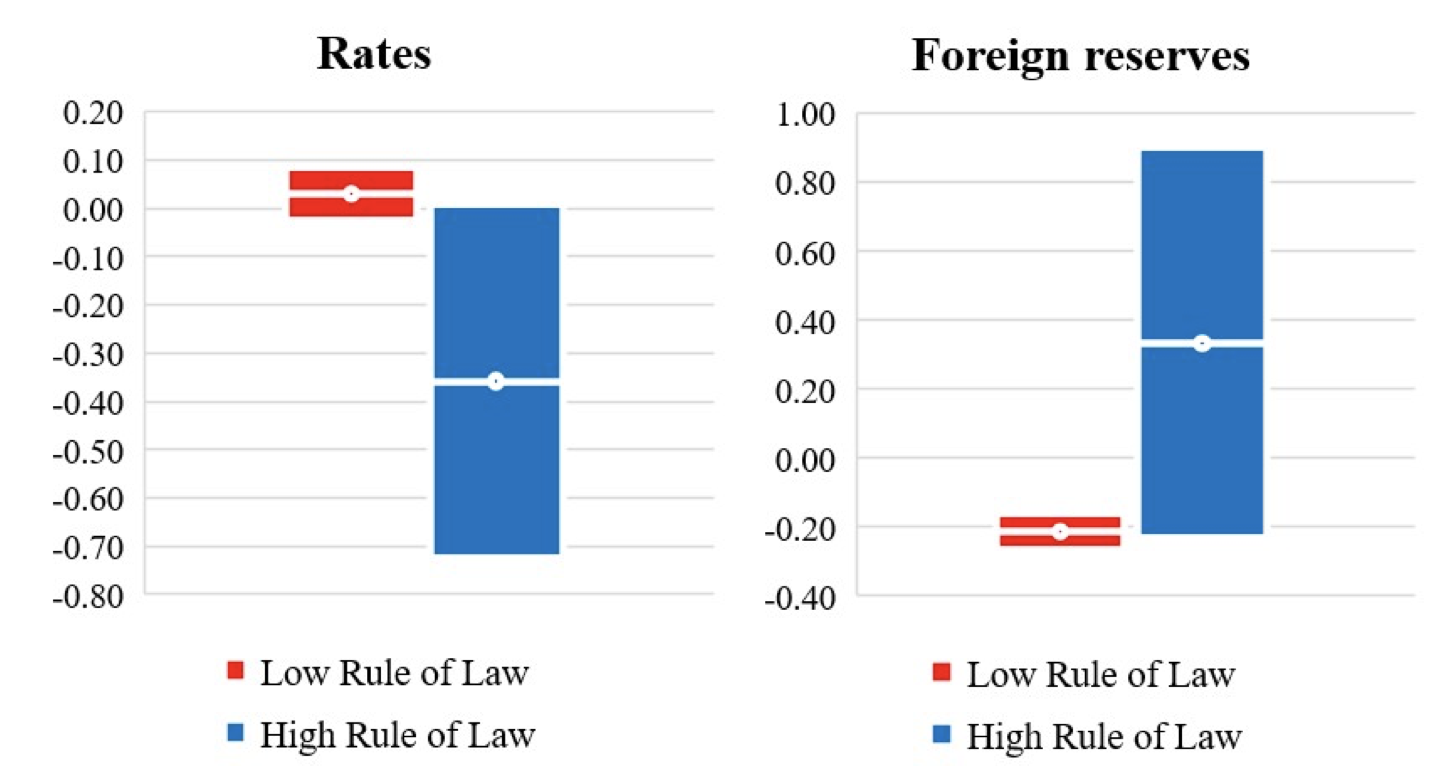Taming the global financial cycle has become a pressing concern for emerging market economies (EMEs). Global financial markets are a crucial source of funding for emerging markets, but financial globalisation has boosted the international diversification of portfolios and has led to an increasing correlation of risky asset prices across markets, driven by shifts in risk aversion (Ward et al. 2018) and US monetary policy (Rey 2013, Miranda-Agrippino and Rey 2020).
Policymakers in emerging market economies, therefore, face a difficult trade-off between domestic and external stabilisation. On the one hand, their policies should ensure that their countries reap the benefits of capital mobility. On the other, authorities need to shield their domestic financing conditions and hence their economies from sudden swings in capital flows and in asset valuations driven by global factors. The menu of available policies to lean against the global financial cycle is large, but their use and effectiveness varies across countries and over time (Mano and Sgherri 2020).
In a recent paper (Ferrero et al. 2022) we show that the quality of institutions (e.g. the rule of law) and its relationship with counter-cyclical policies (macroprudential policies, capital controls, monetary policy, and foreign exchange interventions) play a key role in shaping the economic and financial effects of shocks to global financial conditions on emerging market economies. We analyse the response of the stock market, bond spreads, and GDP to global financial shocks in 22 emerging markets between 1995 and 2022, ranking countries according to the Worldwide Governance Indicators developed by the World Bank. Two clear and important results emerge from this study:
- First, negative global financial shocks are less harmful for countries with more solid institutions. Figure 1 illustrates this point for a specific measure of institutional quality, the rule of law, by plotting the response to a global financial shock of equity prices, sovereign spreads, and economic activity for two groups of countries with respectively low and high rule of law: the decline in share prices and economic activity and the increase in spreads are relatively smaller in countries with higher rule of law.
Figure 1 Economic outcomes, global financial conditions, and the rule of law
- Second, following a negative global financial shock, economies with more solid institutions loosen monetary policy to mitigate the negative effects on the economy and do not deplete foreign exchange reserves. Conversely, in countries where institutions are relatively weaker, policymakers are forced to raise interest rates and intervene in the foreign exchange market (Figure 2), in an attempt to curb the depreciation of the exchange rate and the flight of foreign capital, ultimately further tightening local financial conditions.
Figure 2 Policy response to global financial conditions and the rule of law
These results chime with the findings of Kalemli-Ozcan (2020) that risk perceptions of global investors, the institutional framework, and macroeconomic policies are tightly intertwined in emerging market economies. Her conjecture is that, in countries with low credibility, macroeconomic policies may adversely affect the risk perception of global investors and lead to self-defeating outcomes. Our empirical work largely confirms this intuition.
The results of the empirical analysis pose an interesting dilemma. Emerging markets economies may decide to undertake ex ante costly structural reforms that strengthen institutions and shield their economy from shifts in global financial conditions. Alternatively, emerging markets may decide to avoid these costs and rely only on ex post counter-cyclical policies, remaining though less insulated from global shocks when international financial conditions deteriorate.
A stylised model of a typical debt-constrained emerging market economy sheds light on this trade-off. The private sector in the economy can borrow in both domestic and foreign currency, subject to a collateral constraint that depends on the value of the endowment. Since purchasing power parity does not hold, fluctuations in the real exchange rate affect the value of collateral and give rise to a pecuniary externality. In ‘normal times’, the collateral constraint is slack and the economy enjoys macroeconomic stability. A ‘crisis’ corresponds to a state of the world in which international investors lose confidence in the ability of the economy to repay its debt and the collateral constraint suddenly becomes binding. Because a share of debt is in foreign currency (which recalls the literature on the ‘original sin’) and the emerging market economy real exchange rate depreciates after a global financial shock, the country’s borrowing capacity is further eroded.
Improving domestic institutions (ex ante) makes international investors more willing to accept debt denominated in domestic currency, and thus limits the negative effect of a real exchange rate depreciation on the amount of borrowing in a crisis. The emerging market economy can achieve a similar outcome by intervening (ex post) in the foreign exchange market during a crisis to sustain the domestic currency. The model thus shows that structural and counter-cyclical policies are substitutes. As a result, countries for which countercyclical policies are relatively more effective ex post are likely to have less incentives to strengthen their institutional framework ex ante. An interesting extension of our work would be to rationalise the advice, contained for example in the IMF Institutional View, that strengthening institutions should have higher priority compared with applying ex post counter-cyclical policies.
Authors’ note: The views expressed belong to the authors and are not necessarily shared by the institutions to which they are affiliated.
References
Ferrero, A, M Habib, L Stracca and F Venditti (2022), “Leaning against the global financial cycle”, ECB Working paper 2763.
Mano, R C and S Sgherri (2020), “One shock, many policy responses”, IMF working paper No. 20/10, January.
Miranda-Agrippino, S and H Rey (2020), “U.S. Monetary Policy and the Global Financial Cycle”, Review of Economic Studies 87(6): 2754–2776.
Rey, H (2013), “Dilemma not Trilemma: The global financial cycle and monetary policy independence”, VoxEU.org, 31 August.
Ward, F, M Schularick, A Taylor and O Jorda (2018), “Global financial cycles and risk premiums”, VoxEU.org, 25 June.
Kalemli-Ozcan, S (2020), “US monetary policy, international risk spillovers, and policy options”, VoxEU.org, 16 January.









